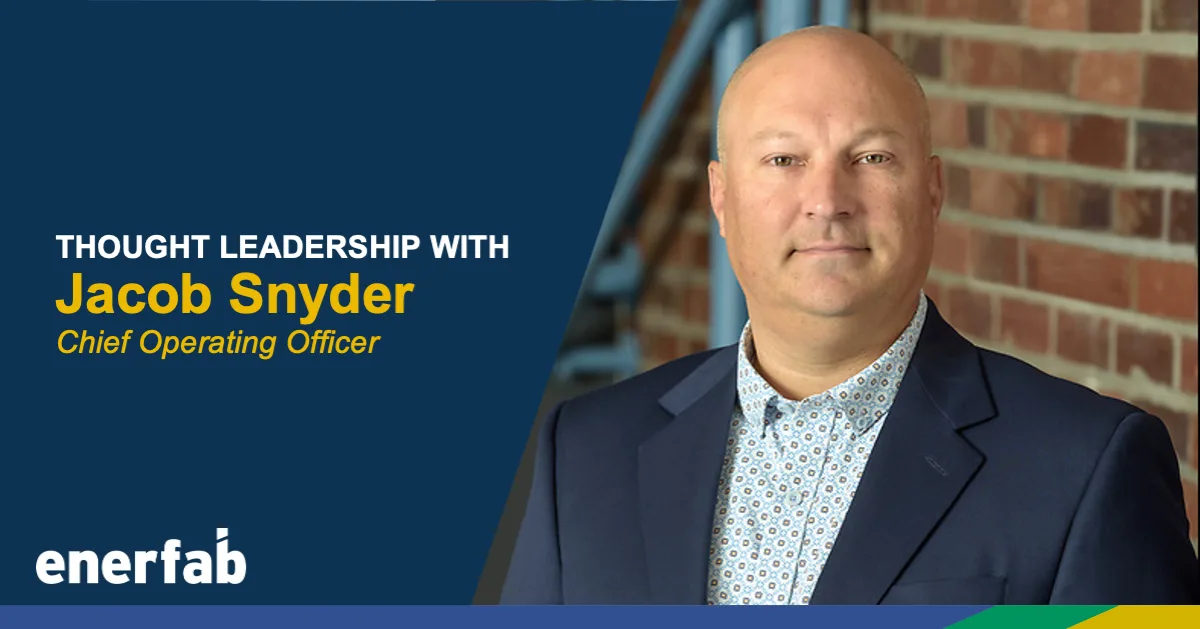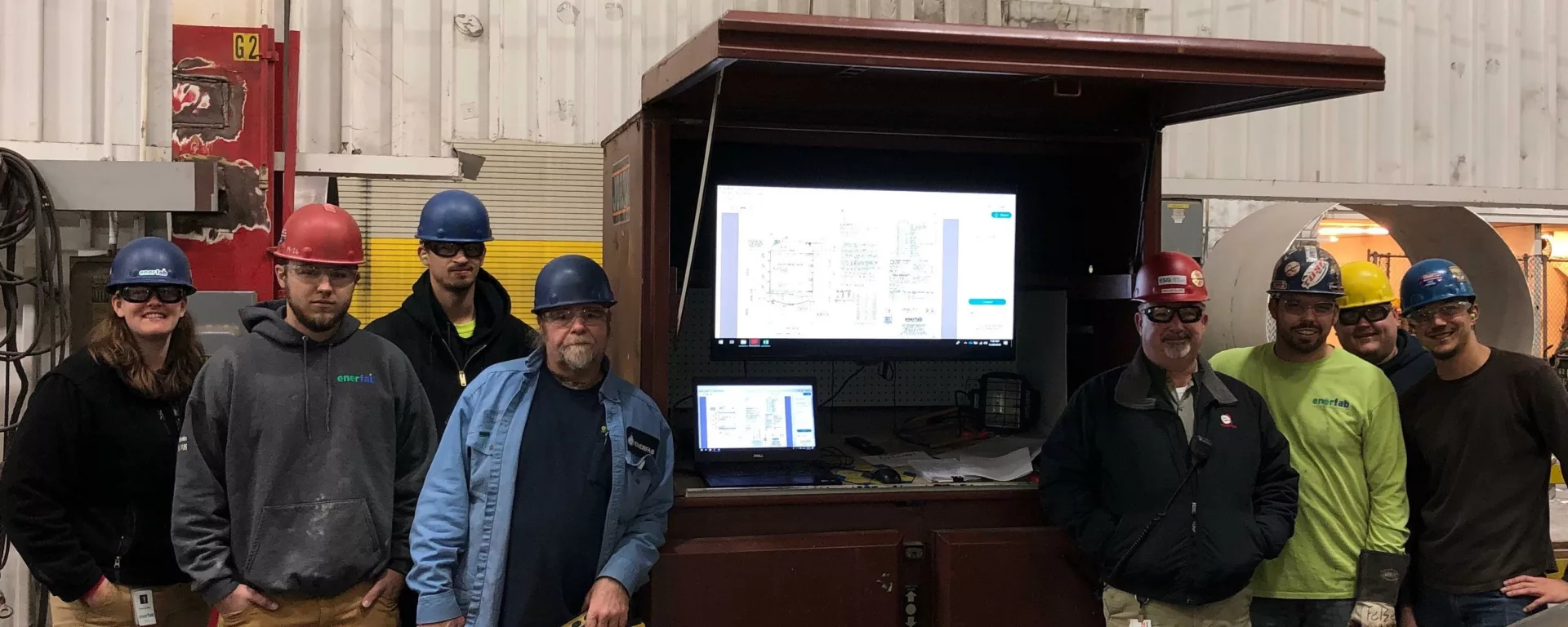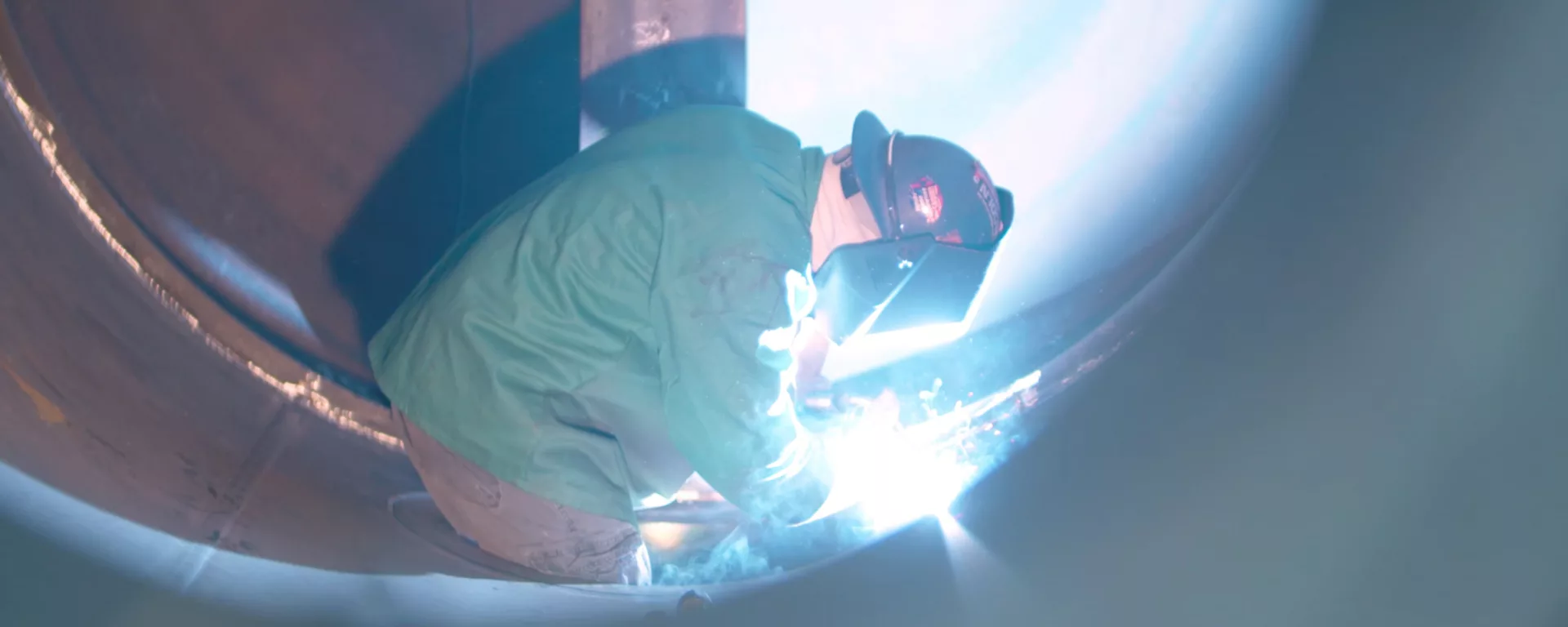Most of Enerfab’s work is technical in nature and critical to the energy, manufacturing, and technology infrastructure that powers America. We tend to gravitate toward more complex projects, those that require problem-solving, expertise, or something unusual. When we take those on, we need highly skilled people who can perform precision tasks such as complicated rigging, challenging welds, precise alignment, or difficult electrical configurations. In other words, we need highly skilled problem-solvers.
Enerfab’s calling card is the group of talented problem-solvers we bring to the table, and our people are a major strategic advantage. Our average payroll consists of about 3,500 employees on any given day, and we’ll employ about 7,000 craftspeople in any given year. It’s a large workforce and a major part of our world. We meet the demand for skilled labor, even amidst current labor shortages, by leveraging our partnerships with the trade unions that can train and provide us with the best and most qualified construction workforce in the United States. Not many large multi-trade construction companies are all-union like Enerfab, but for us, it’s a strategic advantage, and when a customer has a challenging project to deliver on, we know with our union partners, we can answer the call.
It’s a two-way street.
The first thing to know about how we get the most from union relationships is that it’s a two-way street. We don’t merely recruit labor from unions and call it a day. The relationship is close and collaborative and requires us to communicate our needs and be good listeners.
For instance, unions do a lot of the recruiting and training so that when we call for an employee — whether it’s an apprentice, an experienced journeyman, or a foreman — they have someone who’s trained and ready to go. For our part, we work jointly with unions on joint labor-management apprenticeship boards and help develop ever-evolving content that the unions will administer as a part of that training. Along with our partners, the labor-management partnerships between labor and management in the building trades invest billions of dollars of private money in training every year.
At Enerfab, we invest in the relationships we have with the crafts and place emphasis on how we treat the people on our job sites. We try to get the best facilities we can. We try to have positive relationships and resolve any issues or concerns upfront. We try to provide high-paying jobs with good benefits and pay in an efficient and timely manner. For their part, our union partners are advocates who know that we’re a good employer.
Unions attract and build highly skilled laborers.
We typically directly employ about 10 crafts. Given our size and the types of projects we pursue, access to labor is a critical issue, especially now because there’s a shortage of skilled labor in the workforce, and almost everyone in the construction industry is short on people. It’s our relationships with our union partners that make a difference when labor is scarce. Occasionally, we come up short on labor, but it’s pretty rare, and we owe much of that success to the partnerships we have developed over decades.
The unionized sector of the construction industry is uniquely positioned to attract the next generation of skilled craftspeople. Specifically, the unions are able to build the workforce by offering a great compensation program achieved through collective bargaining, by investing private dollars in training infrastructure, including apprenticeship programs, through an evolving societal narrative that is placing less emphasis on college and more emphasis on skills and community involvement, and by placing an emphasis on advancement.
Through the collective bargaining process, we work with our union partners to ensure we pay a competitive wage, provide quality health care, and provide a vehicle for a good retirement. This process also enables us to agree on safety programs, invest in training, and place an emphasis on recruiting a local workforce. Collectively bargained contracts also address important market trends, such as the need for work-life balance. All these areas strengthen our partnership and make recruiting a quality workforce easier.
Unions also offer a level of training that the non-union side cannot match. Non-union training does not meet the level of the apprenticeship programs and training centers from unions, which the Department of Labor accredits. Our union partners have infrastructure that is second to none, with hundreds of local community training centers and dozens of national specialty training centers available to meet skill demands. The union side focuses on technology, investing billions of dollars into training for virtual design and construction, robotics, online learning, and many other areas so professionals come out of training ready to go to work. They have valuable skills, a journeyman card, and no debt.
The United States is finally starting to see a shift away from everybody has to go to college as the common vernacular, so trade work is gaining more and more attention. New professionals entering construction through unions earn money as apprentices, and the training they receive comes at no cost to them. They learn on the job and get paid as they go through training.
Unions are also very tight-knit groups. Members volunteer in their communities, doing things to serve others and their fellow members, often alongside their employers like Enerfab. They set up funds internally at the unions to help one another out if someone’s house catches on fire or something goes wrong. Most unions call themselves brotherhoods, and the support in these groups is pretty significant.
Unions can also highlight a very clear construction career path to recruits, which is appealing. A person can come in as an apprentice and become a journeyman. He or she can then become a foreman and then a general foreman, and that’s all included in the collective bargaining agreement that covers union members. Beyond these ranks, most union contractors, including Enerfab, recruit their superintendents, estimators, safety professionals, and even executives from the union trade ranks. In fact, we participate in many labor management programs that help tradespeople start their own construction business.
Enerfab opens the door to rewarding work and a good quality of life.
When Enerfab is referred a quality craftsperson from one of our union partners, we do our very best to bring them into meaningful opportunities that are great for their career and quality of life. We pull many of our employees from the ranks of unions to be superintendents, safety professionals, project managers, and estimators. Just as unions can paint a picture of how training and certifications enable a clear career path, it’s very easy for us to paint a picture of what a career path looks like for someone coming in. In a lot of other spaces, it’s much more difficult to paint that picture. My colleague and Enerfab’s Chief Growth Officer, Brad Birck, has talked about non-traditional career building in the trades for guys who want to get out of everyday journeyman work, and those paths require more imagination and deliberation to carve.
With our craft employees, it’s much easier. It’s also an offer to do meaningful work that you can see happen right away. There is a real sense of pride in their work. A craft employee can say, I worked on that bridge, or I built that building, or I made the beer you are drinking possible. There’s also a lot of purpose to construction. We hear more and more from employees that they can get a job anywhere, and they want to spend their career somewhere that gives them purpose and where they feel like they are making a difference. There is no industry where that is more evident than in construction.
When we invest in the communities that we serve by donating our time, our skills, and our resources, we make the lives of those in the communities we serve better. It goes far beyond the power we make possible, the water we help make clean, the batteries we help recycle, or the technology infrastructure we build. We serve our communities by building up our people. We want to make sure our people can buy homes and pickup trucks, send their kids to college, and do all those kinds of things that the American dream is built upon. They make a very good living, and they have access to the type of security that you’d want somebody to have. Many companies say they care about their people, but the proof is in action, and we take pride in making sure upward mobility is possible for those that we count on to deliver solutions to our customers and our communities.
Union relationships are good for Enerfab, good for the customer, and good for the community.
Our relationships with unions provide so many benefits and not just for the craft employees who come up through union training and join our ranks. These relationships are good for Enerfab, they are good for our customers, and they are good for the communities we serve.
On a recent major electrification project, we were asked to accelerate the delivery of construction. We more than doubled our workforce in a three-week period, and not just double it from two to four guys, but from 400 to 800 skilled pipefitters. The ability to go and do that successfully for a customer in a market with increasing labor volatility, where they’ve got dates that they have to hit, is just huge, and we’re uniquely positioned to do that. I think we probably do that as well as or better than anyone.
So staffing is big, but the math just adds up in favor of union projects, too. Even if the dollar upfront is more, the cost of ownership for a project that we build is less. A December 2022 study from IPA Global found that, on average, it’s about 4% less expensive to complete a union project. And, if that weren’t enough, union projects are 14% more productive, too.
It is also useful to note that our union relationships can also help our customers navigate things like PLA requirements, zoning, and government funding. Our customers obtain those things through government relations contacts, and the building trades unions all have political influence. They can help push those things through.
In most instances, we’re also getting a local workforce, which is very important. There are fewer and fewer people in the current generation who want to travel, which gives us access to local people and a network. If we can’t get the full workforce for a project locally, we can bring folks from other local unions in to supplement. The local workforce is important to a lot of communities. It helps build the community in the area so that those jobs, wages, and benefits that these investments create stay local. We partner with local governments and companies for whom we can deliver local labor and keep the benefits of these projects close to the community. We then deliver that to the customer.
Conclusion
Union relationships fuel us. It’s not us versus them. They are part of our DNA. It’s who we are. We go in as partners, and we succeed or fail together. Our business is all about solving complex challenges for our customers, and there is no doubt that the relationships we have built with our trade union partners make solving challenges possible. In a market that is so desperate for skilled people, the way to deliver is through relationships, and we have the track record to prove it.




